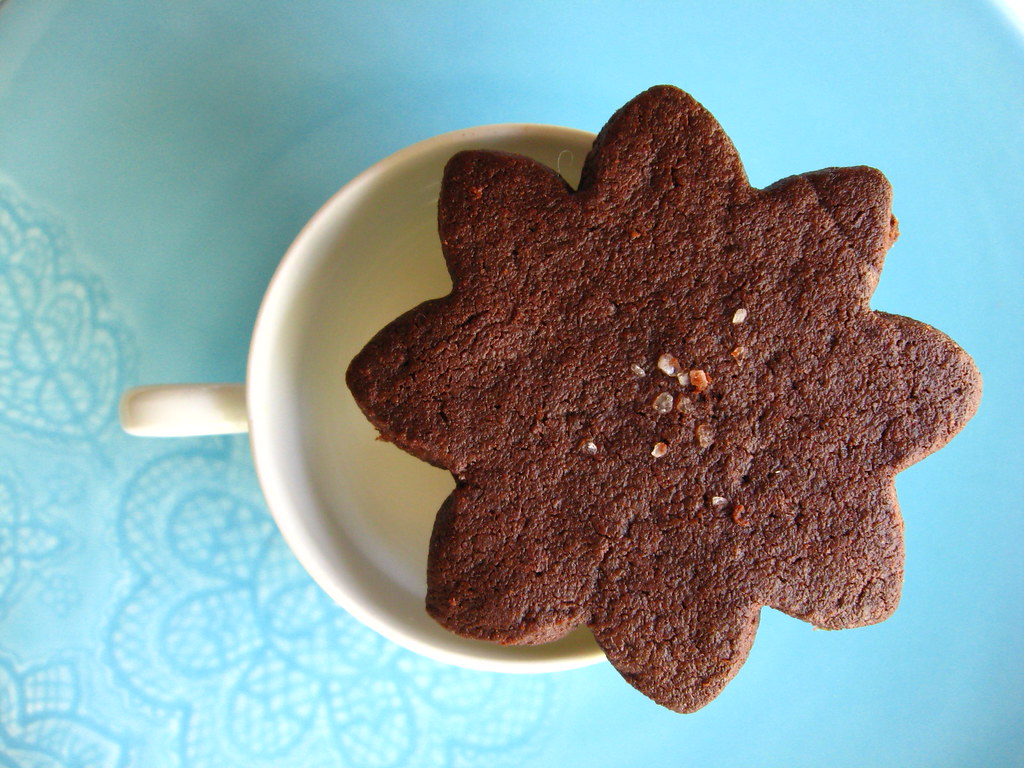
If you're a fan of the combination of chocolate + salt, this is the cookie for you. It's deeply chocolaty, not too sweet, and very salty. Use a fine-grain sea salt for a uniform saltiness, or a more coarse grain for little nuggets of salt in every bite.
The only major change I made from the original recipe was to omit the cacao nibs it called for, because I didn't have any. And while I'm sure the nibs would give a great flavor and texture, the cookie is fantastic without them. No need to get too fancy.
Chocolate Shortbread with Sea Salt
adapted from Essence of Chocolate by John Scharffenberger and Robert Steinberg
5 ounces (1 cup) all-purpose flour
2 1/2 ounces (3/4 cup) cocoa powder
1 teaspoon sea salt
6 ounces (12 tablespoons) butter, room temperature
3 1/2 ounces (1/2 cup) granulated sugar
1 teaspoon vanilla extract
1. Mix the flour and cocoa powder in a bowl.
2. In another bowl or in a stand mixer, beat the butter and sugar together for about 5 minutes until light colored and fluffy.
3. Add in the vanilla.
4. Add half of the flour-chocolate mixture and combine on low speed. Add the rest of the mixture and mix until just incorporated.
5. Add in the salt and mix to combine.
At this point the dough can be wrapped in plastic and stored in the refrigerator for up to a week. But if you want to finish the cookies now, no refrigeration is necessary.
6. Baking: Preheat the oven to 325 degrees F and line baking sheets with parchment paper.
7. Roll out the dough between two sheets of parchment paper to 1/4-inch thickness.
8. Using cookie cutters or a plain old knife, cut the dough into whatever shape you want. Sprinkle a few grains of coarse sea salt on top of a few cookies if you want to get crazy.
9. Place the shapes on the prepared sheets and bake for 15 minutes, rotating halfway. The shortbread should be slightly firm but not hard.
Let cool on wire racks.
The cookies can be stored in an airtight container for up a week. The texture is best on the day of baking, but the chocolate flavor deepens after a few days.





